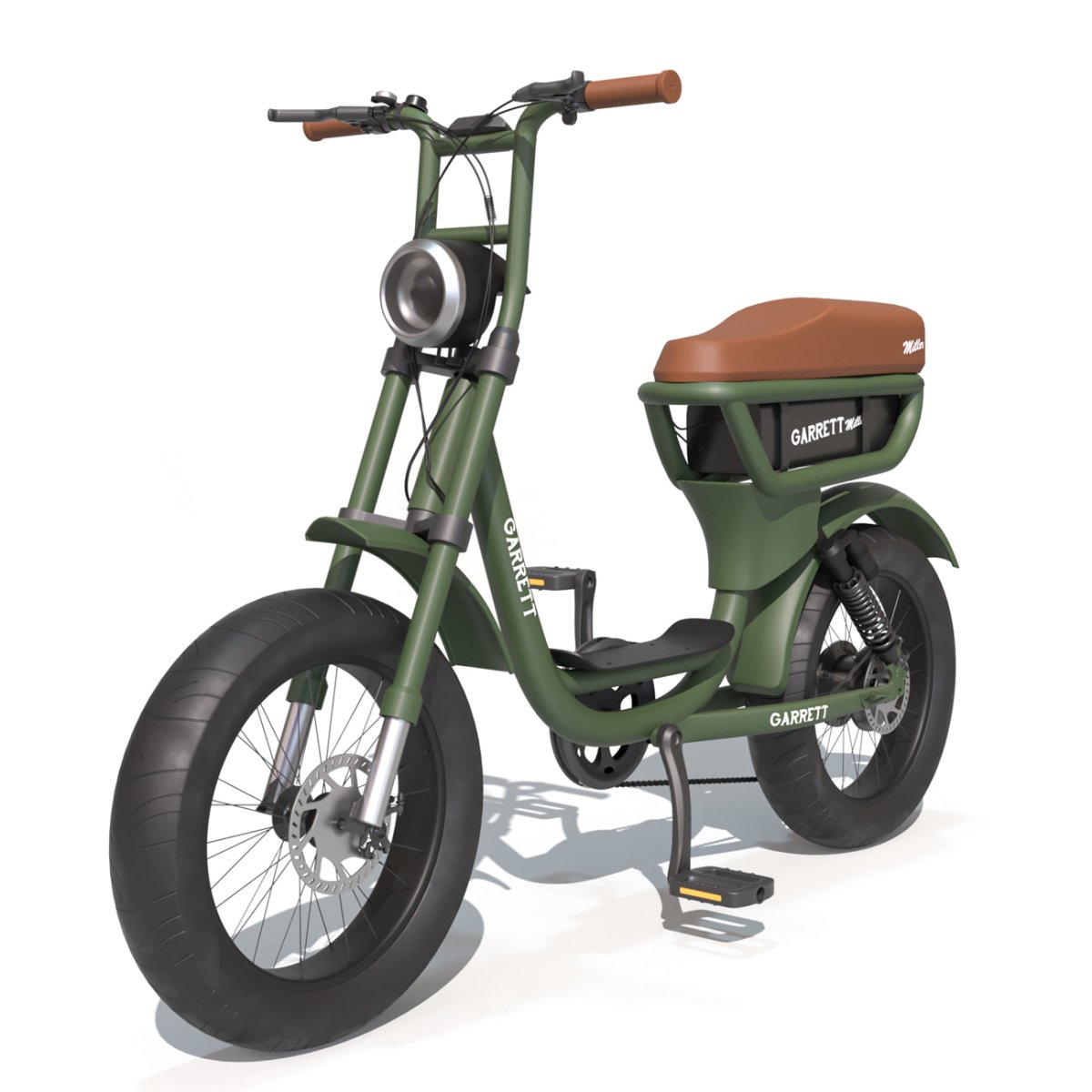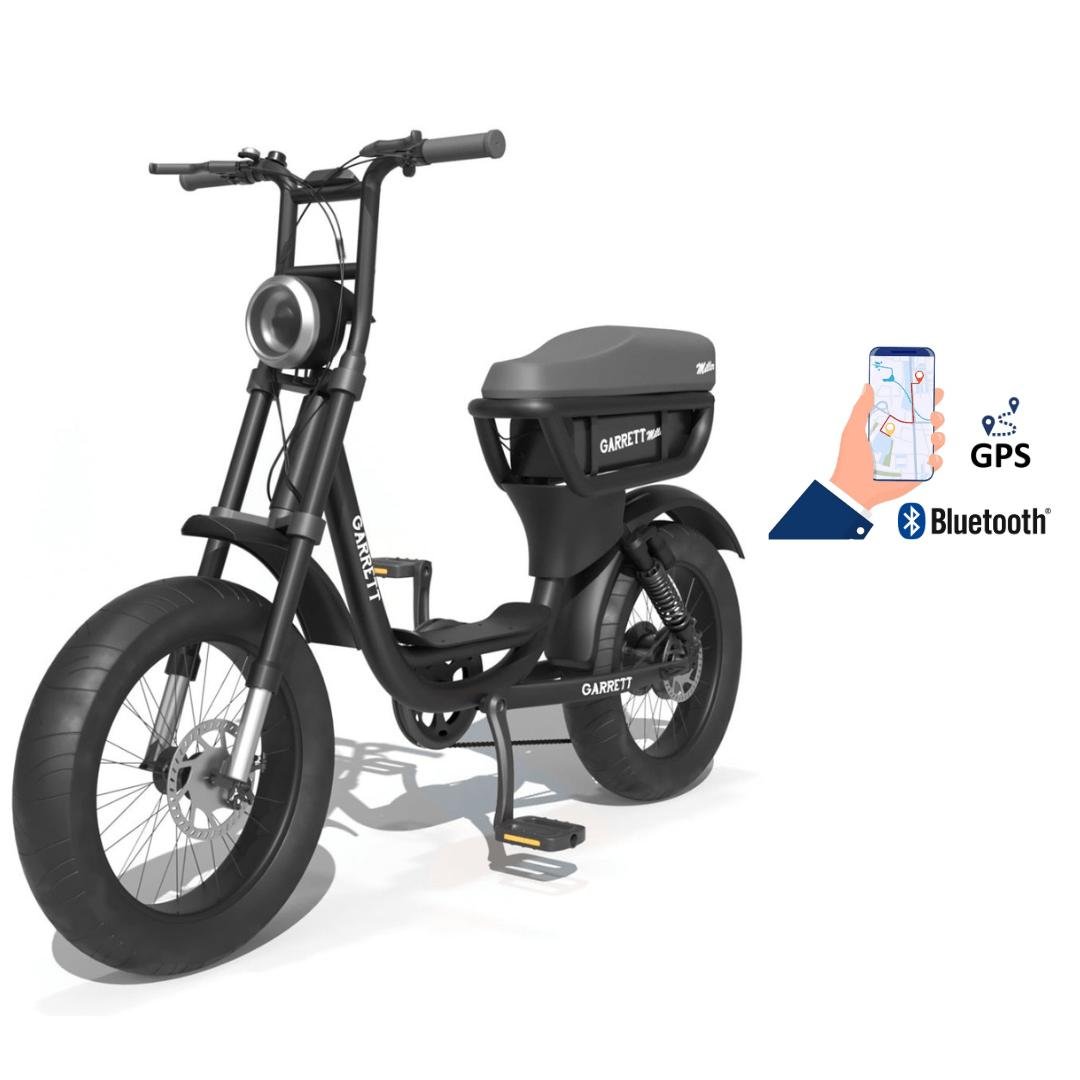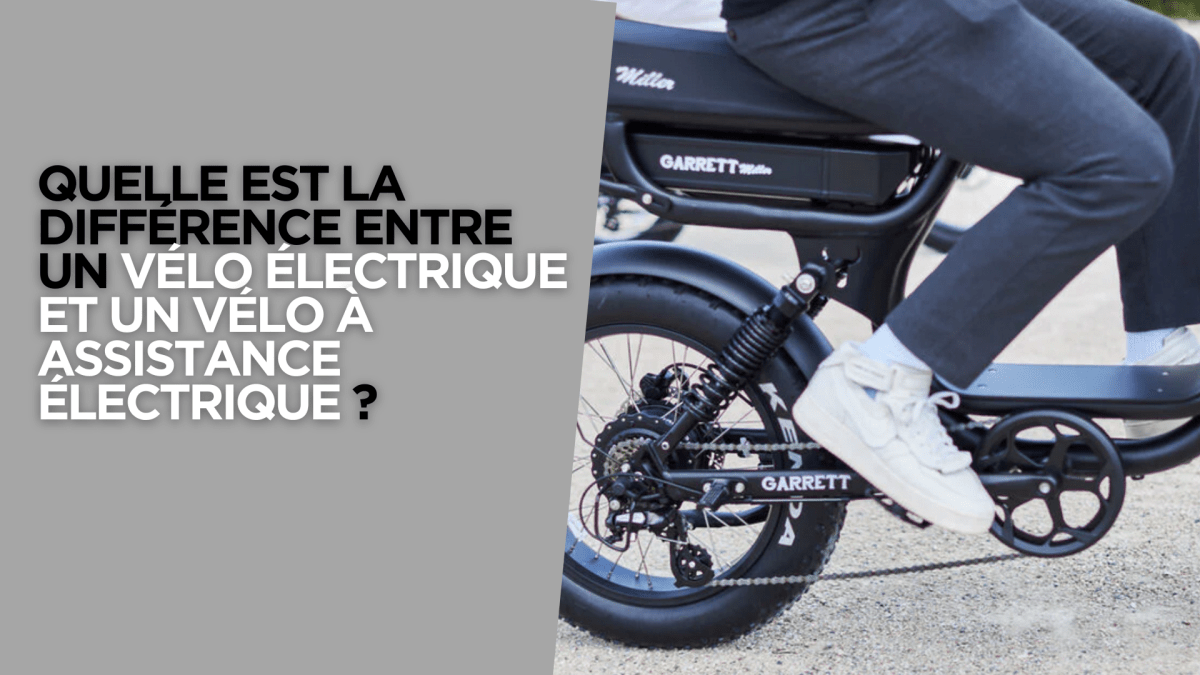Getting around by bike is good. Getting around by bike without any effort is even better. And that is precisely the promise made by electric bikes and pedal-assist bikes (PAB). Although these two types of bikes have many similarities, one striking difference completely changes the game: the type of motor. To learn more about this topic, we invite you to continue reading about the difference between PAB and electric bike.
The type of motor: the main difference between the electric bike and the Pedelec
The electric bike and the Pedelec are primarily distinguished by their type of motor. The electric bike operates with a motor similar to that of a moped, while the Pedelec has a so-called "intelligent" motor that adapts to the cyclist's pedaling rhythm. To fully understand their difference, we invite you to continue reading.
What is pedal assist?
As mentioned earlier, the electric bike is powered by a motor similar to that of a moped. It starts when the bike starts and only stops when the rider stops.

Conversely, the Pedelec is equipped with an "intelligent" motor offering what is called pedal assist. With this, when you pedal, the motor starts and eases the pedaling effort. Then, as soon as you coast, the motor stops and the assistance deactivates to let you decelerate.
This type of motor is called "intelligent" because, thanks to its sensors, it adapts to your pedaling effort. So, unlike electric bikes, on a Pedelec, you dictate the level of assistance you receive.
On electric bikes, the motor runs constantly, which leaves little room for speed modulation.
Is pedal assist really that important?
Here is a question all future Pedelec buyers ask themselves. In fact, pedal assist offers a definite advantage for users, because when pedaling is controlled and the bike does not have to run constantly, it has a positive impact on the battery's range. The latter can then retain a large part of its energy and will not require frequent recharging.
A greater range on the Pedelec compared to the electric bike
This part directly connects to the one we just discussed: the Pedelec has a greater range than the electric bike. But, we still prefer to go into details to make sure you have fully understood.

More range thanks to pedal assist
Thanks to pedal assist, the Pedelec consumes much less energy than an electric bike. How? Simply by controlling the pedaling and avoiding keeping the bike running constantly. Since the motor is only activated when you start pedaling, the Pedelec's battery is therefore less stressed, unlike the electric bike.
With a Pedelec, it is then easier to save energy, as the power of the motor adapts to your pedaling strength. Thus, it is possible to maintain a long range and avoid repeated recharging.
How many kilometers of average range?
Specifically, the battery of electric bikes offers an average range of 50 to 80 km, while Pedelecs can travel up to 140, or even 180 km.


Electric bike vs e-bike (VAE): Which model is more cost-effective in the long run?
Electric bikes and e-bikes (VAE) can have varying purchase prices, but the question arises: which offers the best value for money in the long term? While the electric bike may seem more expensive to buy, maintenance costs can change the equation. Let's see together how these two types of bikes compare.

Purchase price: What difference on the receipt?
When going to a store or online to buy a bike, the first thing that usually catches the eye is the price. An electric bike, often more powerful and equipped with a larger capacity motor, has a higher purchase cost than the e-bike (VAE). Expect on average between €1,000 and €3,500 for an electric bike, depending on features.
Conversely, electric bikes are often less expensive, with prices starting around €500 and going up to €2,500 for high-end models.
That said, it should be remembered that the purchase price is only part of the equation. Although the e-bike (VAE) may seem more affordable initially, other factors can affect the overall investment.
Maintenance: In the long run, which bike costs less?
Regarding maintenance costs, the two types of bikes show notable differences. The e-bike (VAE), thanks to its "smart" motor and pedal-assist system, is generally less stressed. Therefore, fewer parts need to be replaced in the long term.
For example, the battery life of an e-bike (VAE) can be longer than that of an electric bike, since the motor only works with pedaling, thus reducing wear.

On the other hand, urban electric bikes, whose motor is more powerful and constantly active, may require more repairs, especially if you frequently use the bike for long distances or in difficult conditions. Moreover, more powerful motors and components can lead to higher replacement or repair costs. Result: the electric bike can generate more maintenance expenses in the long term.
Batteries: An additional cost to consider
Batteries are one of the key elements in the maintenance of both types of bikes. Battery life varies depending on usage, the type of bike, and riding conditions. For electric bikes, the battery may require more frequent replacement. This will likely represent a significant expense, between €300 and €600, depending on capacity.
VAEs, with their more moderate assistance, tend to preserve their battery longer. However, when replacement occurs, it is also a cost to consider. Depending on the model, this can cost between €200 and €500.
Electric bike or VAE: Which model to choose according to the terrain type?
Urban roads, mountain trails, or all-terrain grounds: some bikes are better suited than others depending on the nature of the route. While electric bikes and pedal-assist bikes (VAE) share common features, their design and performance differ depending on the terrain. So, which one is best suited for your adventures? Here are the details.

The electric bike: The ideal option for the city and long distances
The electric bike is perfect for urban trips and long distances on roads. Thanks to its powerful motor, it allows you to easily maintain a constant speed and climb hills effortlessly. If you often ride in the city or on well-maintained roads, the electric bike is an excellent choice. It helps you go fast, cover long distances, and arrive without being tired.
Although some electric bikes can ride on slightly rough terrains like gravel paths, they are mainly designed for smooth roads. Their structure and motor are made for speed and stability on asphalt, so they are not ideal for very uneven terrains, like mountains.
The electric bike: A good compromise, but not made for long distances
The electric bike is more versatile, perfect if you want a bike that works well both in the city and on dirt paths. It has a more moderate motor that adapts to your pace, which can be great for short rides. But, compared to the electric bike, it doesn’t allow you to reach the same speeds, making it not the best choice if you plan to ride long distances at high speed.
Of course, there are all-terrain electric bikes with wider tires and reinforced suspensions, making them suitable for mountain trails. But even in this version, their less powerful motor and pedal-assist system won’t give you the same continuous power feeling as the electric bike.
The all-terrain electric bike: More expensive, but high-performing
There are also powerful electric bikes and all-terrain models, but these are more expensive and designed for passionate or experienced cyclists. Although they are perfect for difficult terrains, they remain less smooth to ride than the classic electric bike, which is better suited for regular trips and longer distances.
Why choose an electric bike?
If you are looking for a fast, efficient, and reliable bike for your daily city trips or long road rides, the electric bike is clearly the best choice. It offers superior performance, riding comfort, and great stability. If you do not plan to ride on really rough terrain, an electric bike will perfectly accompany you, no matter the distance or type of road.
Pedelec vs Electric bike, what does the legislation say?
It should be known that their difference in motorization not only impacts their autonomy or speed. It also determines the legislation on these two vehicles, which you absolutely must know to ensure legal use. Here are the key points to remember.

License plate and driving license
Since the Pedelec is limited to 25 km/h with power less than or equal to 250W, it is classified in the category of electric-assist bikes. However, the electric bike can develop significantly higher power, with a maximum speed exceeding 45 km/h, placing it in the moped category. To be able to circulate, the latter must be registered and the cyclist must have a driving license A, B, or AM.
Insurance
As for insurance, it mainly concerns the electric bike. Like any moped, it must have insurance to cover costs in case of damage caused by a third party. Conversely, the Pedelec is not required to subscribe to insurance but could benefit from coverage in case of theft. Subscribing the Pedelec to insurance is the owner's personal choice.
Wearing an approved helmet
To ride a moped, the user must obligatorily wear an approved helmet. Without it, they risk sanctions such as paying a fixed fine of €135 and losing 3 points on their driving license.
On a Pedelec, wearing a helmet is optional but highly recommended to ensure the cyclist's safety. It notably helps protect the head from severe impacts in case of a fall or collision.
Conclusion
In a way, the main differences between the Pedelec and the electric bike are mainly due to their difference in motorization. Whether it's autonomy, profitability, suitable terrain, or legislation, all depend on the type of motorization on the bike. In this article, we learned that when the electric bike exceeds 250W of power and 45 km/h of max speed, it must be registered and the cyclist must have a driving license A, B, or AM. Not yet decided on which model to choose? Come take a look at Weebot. We offer interesting deals that will make your choice easier.

